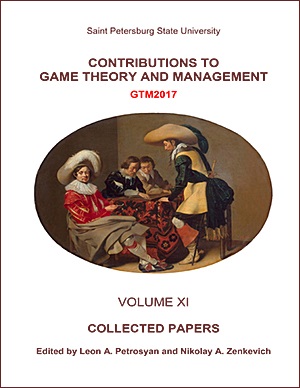A Dynamic Oligopoly Marketing Model of Advertising
Abstract
We consider a dynamic oligopoly advertising model for both noncooperative and cooperative setting. Feedback Nash equilibrium strategies and cooperative strategies are found to determine the optimal advertising efforts of each firm for both setting respectively. Besides, depending upon the cooperative strategies, imputation is introduced as an optimal allocation of joint payoff and Imputation Distribution Procedure is used to guarantee the time consistency for cooperation.
Keywords:
Advertising competition, Optimal control, Dynamic programming, Time consistency
Downloads
References
Downloads
Published
How to Cite
Issue
Section
License
Articles of "Contributions to Game Theory and Management" are open access distributed under the terms of the License Agreement with Saint Petersburg State University, which permits to the authors unrestricted distribution and self-archiving free of charge.




